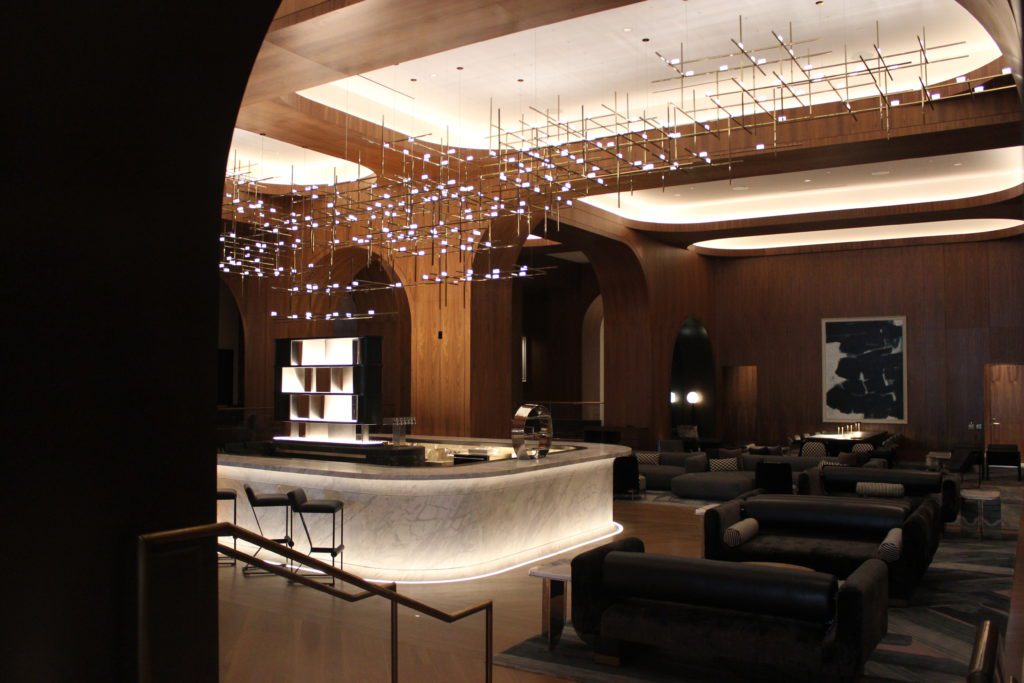Owners of the former Fairmont Hotel in San Jose, rebranded as Signia by Hilton last year, are planning to sell off about a third of the hotel’s guest rooms.
Depending on what a potential buyer does with the property, some city boosters said the change could be a positive one for the downtown area, though others are concerned about the downsizing’s effect on marketing the city for conventions and events.
Alex Stettinski, CEO of the San Jose Downtown Association, said it’s unfortunate to see a major hotel being downsized, but understands hotels are facing challenges in general.
“When I learned about it I was sad. I was like, ‘Oh my god, that was the Fairmont, that’s our iconic hotel,’” Stettinski told San José Spotlight. “But I can see that they may think that it’s going to be hard to fill 800 beds on a constant basis.”
Sam Hirbod, a real estate investor and owner of the hotel at 170 S. Market St., told The Mercury News this week he has put the 264-room southern tower up for sale, and that dozens of interested parties have toured it.
The south tower was completed in 2002, an addition made by former owner Lew Wolff, who had partnered with a Saudi Arabian crown prince to purchase the original hotel in 1996.
All guests at the Signia are currently staying in the south tower, while the remaining finishing touches on a major renovation are made to the 541-room north tower, which also includes all the hotel’s amenities such as a reimagined lobby bar and lounge, fitness center and 65,000-square-foot conference space.

Hirbod told The Mercury News the south tower under new ownership could be converted to an extended stay model, such as a “corporate apartment concept.”
Derrick Seaver, head of the San Jose Chamber of Commerce, said he can’t comment on the specific business the hotel is doing currently, but noted business travel is still significantly lower than pre-pandemic levels.
“If we’re not having the return on business travel to the area that we have traditionally had, then businesses, particularly the hospitality industry, are going to have to be nimble and that’s exactly what they’re looking at,” Seaver told San José Spotlight.
He thinks a long-term stay model could benefit the downtown area, especially if the hotel isn’t filling up near capacity on a regular basis.
“The goal is vibrancy, to have as many people down here as often as possible,” Seaver said. “And if the current use of this facility doesn’t suit that, and there is another best use of that facility to suit that, we certainly would be optimistic that they can deliver on that promise.”
Hirbod did not respond to requests for comment. A Hilton spokesperson said the company will continue to manage the hotel property.
“We remain fully committed to welcoming guests with the quality service and signature hospitality experience they have come to enjoy,” the spokesperson said.
John LaFortune, president and CEO of Team San Jose, a destination marketing organization aimed at bringing visitors to the city, said the three-year average occupancy rate in downtown hotels is about 56% currently, about 20% less than pre-pandemic levels.
Occupancy rates downtown aren’t expected to rebound until at least 2025, and LaFortune said losing a large chunk of rooms will slow that recovery, and hurt the overall visitor economy, especially for booking events at the nearby convention center.
“Convention booking is contingent on securing available room blocks for attendees. If there are less bookable rooms, there are less conventions,” LaFortune told San José Spotlight. “A loss in available group rooms will further damage downtown vibrancy and will push convention center group rooms to the airport or outskirts of the city, making San Jose more difficult to sell.”
If fewer conventions come to the area, LaFortune also said it could lead to a decrease in overall hotel rates in the city, compounding the potential impact as the city might lose out on more hotel taxes.
Stettinski said he’s glad the north tower, the larger portion of the hotel, will remain, and that it’s still a decent size with 541 rooms. He also thinks an extended stay model could work for the south tower and the downtown area.
“If we can fill this tower with people who do contract work here in the area and stay for six months, or even a year, that brings a lot of vitality and vibrancy to downtown,” he said. “These people will develop habits and routines that reflect those of residents.”
It’s not clear how soon the tower could sell, nor who the buyer might be. Hirbod presented the possible sale as a win-win for the city. Despite being optimistic, Stettinski said the city will have to wait and see.
“It remains to be seen who the buyer will be and what they are going to be doing with that tower,” he said. “You are always taking a chance with a sale, we can only hope for the best.”
Contact Joseph Geha at [email protected] or @josephgeha16 on Twitter.



Leave a Reply
You must be logged in to post a comment.